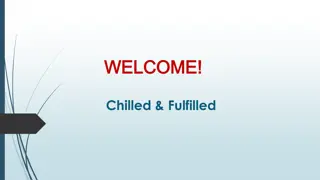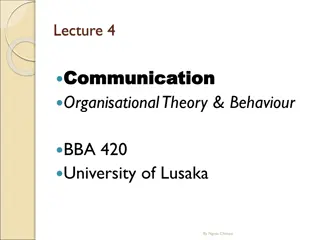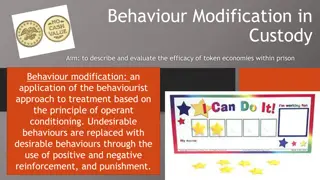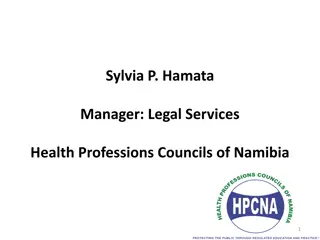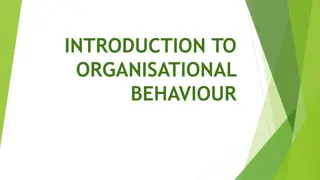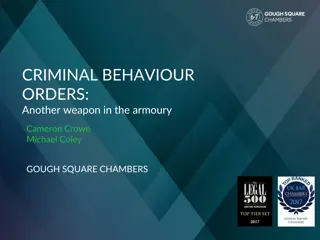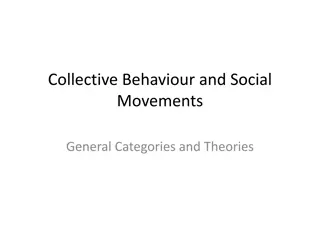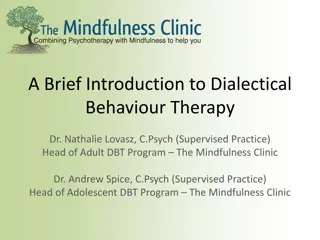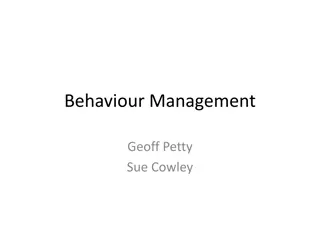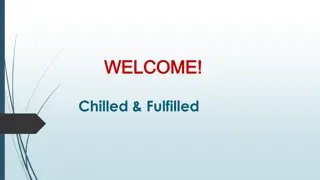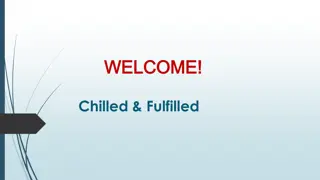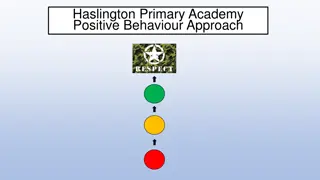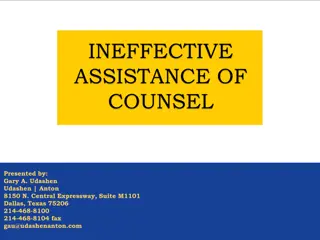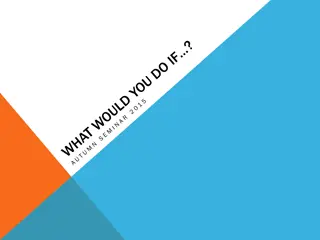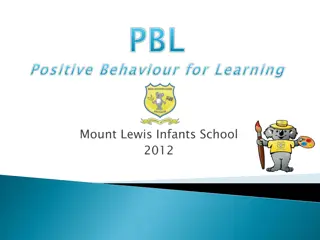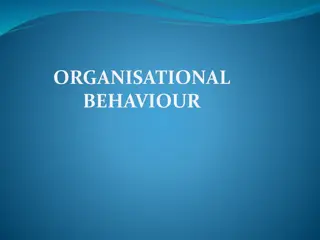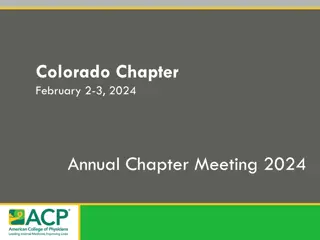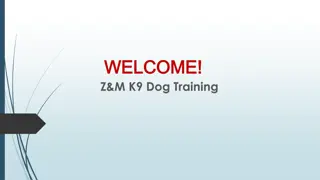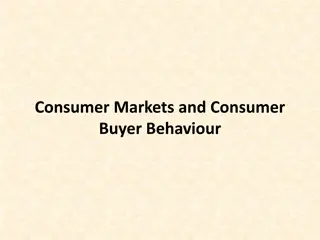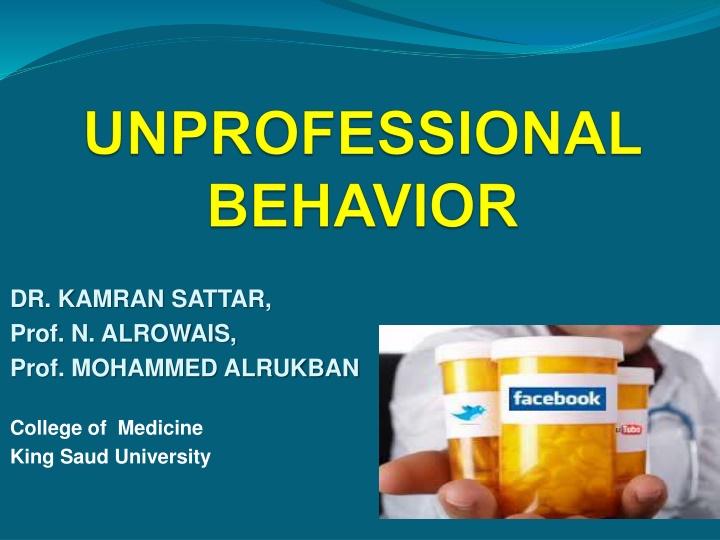
Identifying Unprofessional Behavior in Medical Education
Explore the world of unprofessional behavior in medical education – from defining and identifying such behaviors to providing real-life examples and ways to avoid them. Learn about the signs and symptoms, including abuse of power, arrogance, greed, misrepresentation, impairment, lack of conscientiousness, and conflicts of interests. Discover the impact of unprofessionalism on workplace dynamics, staff morale, and patient care. Dive into classroom settings where students may exhibit unprofessional behavior.
Download Presentation

Please find below an Image/Link to download the presentation.
The content on the website is provided AS IS for your information and personal use only. It may not be sold, licensed, or shared on other websites without obtaining consent from the author. If you encounter any issues during the download, it is possible that the publisher has removed the file from their server.
You are allowed to download the files provided on this website for personal or commercial use, subject to the condition that they are used lawfully. All files are the property of their respective owners.
The content on the website is provided AS IS for your information and personal use only. It may not be sold, licensed, or shared on other websites without obtaining consent from the author.
E N D
Presentation Transcript
DR. KAMRAN SATTAR, Prof. N. ALROWAIS, Prof. MOHAMMED ALRUKBAN College of Medicine King Saud University
OBJECTIVES By the end of this lecture You should be able to; Define unprofessional behavior Identify various elements of human nature that contribute to unprofessionalism Provide examples of such behaviors from daily life Avoid unprofessional behaviors.
Not pertaining to the characteristic of a profession.
Increased workplace difficulties Decreased morale in other staff Decline in patient care
Signs and Symptoms The work of Project Professionalism (ABIM, 2001) describes unprofessional behaviour in terms of seven broad categories of 'signs and symptoms'. 1- Abuse of power (abuse while interacting with patients and colleagues; bias and sexual harassment; and breach of confidentiality); 2- Arrogance (offensive display of superiority and self-importance); 3- Greed (when money becomes the driving force);
Signs and Symptoms 4- Misrepresentation (lying, which is consciously failing to tell the truth; and fraud, which is conscious misrepresentation of material fact with the intent to mislead); 5- Impairment (any disability that may prevent the physician from discharging his/her duties); 6- Lack of conscientiousness (failure to fulfill responsibilities); 7- Conflicts in interests (self-promotion/ advertising or unethical collaboration with industry; acceptance of gifts; and misuse of services overcharging, inappropriate treatment or prolonging contact with patients).
Classroom Setting-Students/Trainee Arriving for class late and/or leaving early Being unprepared for group sessions Not completing assigned tasks Disrupting class sessions Failing to attend scheduled class sessions Cheating on an exam
Classroom Setting-Students/Trainees Using Mobile Phone during class Chatting during class Focusing on the test vs. learning Prejudging content in advance Intolerance of the opinions of others
Classroom Setting-Faculty Plagiarism Judgmental attitude or favoritism Coming late Sloppy handouts and syllabi Abusive behavior Using Mobile Phone during class
Clinical Setting-Students Dressing inappropriately Avoiding work and/or responsibilities Exhibiting little empathy for patients Demonstrating lack of sensitivity to patients cultural backgrounds Not protecting patient confidentiality
Clinical Setting: Faculty Showing favoritism Failing to attend scheduled sessions Using inappropriate language or behavior Asking learners to perform personal tasks, for example, picking up laundry
Practical clinical examples Marketing for a new drug? Conflicts between government vs private commitments
1. Illegal or criminal acts 4. Negligent practices 2. Immoral acts 5. Plagiarism 3.Business related acts
A physician may be disciplined and lose his medical license based solely on the fact that he was convicted for a crime or offense.
Immoral acts generally fall into the limited category of sexual activity with individuals that may be patients.
These acts are related to the operation of the business, not the quality of the care Obtain, maintain, or renew a license to practice medicine by bribery, fraud or misrepresentation
Failure to maintain records of a patient, relating to diagnosis, treatment and care Altering medical records Failure to make medical records available for inspection
Is an unethical, dishonest act whereby an individual uses the work of another, commit literacy theft, or present work as an original idea without crediting the source or stating that it is derived from an existing source.
Types of Plagiarism 1. Direct copying. 2. Word switching. 3. Working with others. 4. Concealing sources. 5. Buying assignments. 6.Self plagiarism.
Direct copying Copying someone else s work using the exact words and putting it as your own. This is the most common type of plagiarism.
Word switching Putting someone else's writing as your own by changing words without showing that you are using someone else's ideas.
Working with others Copying all or part of another student s writing. Sharing an assignment. Group work on individual assignment. Writing in Arabic and asking some else to translate your work.
What is acceptable when working with others Group assignments. Discussing your work and ideas with other students. Getting advice on sources of information from other students, lecturers or professionals.
Concealing sources Hiding the sources of your work and not revealing them. This includes: 1. Putting someone else s ideas on your words without referring to them. 2. Using a reference more than one time, but only pointing it out once.
Buying assignments Buying an assignment is the worst kind of plagiarism and may have serious consequences.
Self plagiarism Re-using all or part of an assignment or a project that you have used before without making it clear is considered as plagiarism.
Impaired Disruptive behavior Dishonest Greedy Abuses power Lacks interpersonal skills Conflict of interest Self-serving
Impairment means more than making incorrect diagnosis. 1. Avoidance of patients and their psychological needs 2. Dehumanized care 3. Inappropriate treatment
Include repeated episodes of: Sexual harassment Racial or ethnic slurs Intimidation and abusive language Persistent lateness in responding to calls at work
Late or incomplete charting Delayed or no responses to call or pagers Abusive treatment of staff Unkempt appearance and dress Inability to accept criticism Gender or Religious bias
2025% apparently disappoint their patients More than 2/3 of physicians never or very rarely generate patient complaints (Hickson et al. 2002, 2007a,2007b). A total of 6% of doctors, however, received 25 or more complaints over a 6-year period Nurse surveys suggest that 4 5% of physicians display such behavior (Diaz & McMillin 1991; Rosenstein and O Daniel 2005a)
Unprofessional behavior and patient safety Unprofessional behavior by clinicians poses a definite threat to patient safety. In a 2008 survey of nurses and physicians at more than 100 hospitals, 77% of respondents reported witnessing physicians engage in disruptive behavior (most commonly verbal abuse of another staff member), and 65% reported witnessing disruptive behavior by nurses. Most respondents also believed that unprofessional actions increased the potential for medical errors and preventable deaths. has been linked to adverse events in theoperating room.
Unprofessional Behaviors Among Tomorrows Physicians Review of the Literature With a Focus on Risk Factors, Temporal Trends, and Future Directions Fargen, Kyle M. MD, MPH; Drolet, Brian C. MD; Philibert, Ingrid PhD, MBA Academic Medicine: June 2016 - Volume 91 - Issue 6 - p 858 864
A total of 51 publications met criteria for inclusion in the study. The data in these reports suggest that plagiarism, cheating on examinations, and listing fraudulent publications on residency/fellowship applications were reported in 5% to 15% of the student and resident populations that were studied. Other behaviors, such as inaccurately reporting that a medical examination was performed on a patient or falsifying duty hours, appear to be even more common (reportedly occurring among 40% to 50% of students and residents).
Intervention Norm Disciplinary Pattern persists Guided by authority Awareness Apparent pattern Single unprofessional incident Informal Vast majority of doctors: no professionalism issues None
: ( : ) ( : Abu Tameem ibn Aws may Allah be pleased with him, that the Prophet peace be upon him said: (Debt advice, we say: To whom, O Messenger of God? Said: (Allah and His Book, His Messenger, the leaders of the Muslims and their common folk Ruahalboukharaand Muslim
Not pertaining to the characteristic of a profession. Unprofessional behavior fall into five categories: Illegal or criminal acts Immoral acts Business related acts Acts that violate acceptable medical practices Plagiarism Do not have to wait until patient dies to determine that medical care suffered.
A senior doctor, head of a high profile department, is known to bring in research dollars, to be very hard working and adept at specialized medical procedures. S/he is well known for shouting at nurses, throwing instruments back at them, and humiliating junior medical staff. S/he is often absent from department, Complaints are made to hospital administration from staff members; increased numbers of "critical incidents" and staff resignations are noted.
A general practitioner is consistently late or absent for pre-scheduled sessions. S/he gives no explanation, leaving the partners to fill in and make excuses. When confronted, s/he becomes abusive in front of office staff and patients.
Scenario 3 A final-year medical student has caused disruptions throughout the course by monopolizing time in tutorials, behaving inappropriately with patients and being unwilling to heed advice. Many patients refuse to be interviewed by her/him and have complained to staff. S/he has not failed any exams, but several tutors and nurses have raised concerns about the student's "attitude" and ability to work as an intern.
Scenario 4 A 54 year old male patient is admitted for the fourth time in two months for complaints of severe ridiculer pain following several attempts at decompressive back surgery. His pain has been sub-optimally controlled with very high-dose narcotics and other adjuvant pain-management medications. The nursing staff take his vital signs at the start of every shift but otherwise only appear when his medications are due or he rings the call bell. The pain waxes and wanes but is so severe at times that he cries out. The medication orders for breakthrough pain is ineffective. When he tells one nurse this, she responds, sighing, :you have had your medication and you ll just have to wait three hours for your next does. I m going on break, so don t bother me by ringing the bell
Unprofessional Behavior among Medical Students http://www.nejm.org/doi/full/10.1056/NEJMc060089 Unprofessional physicians http://www.ncbi.nlm.nih.gov/pmc/articles/PMC1237990/pdf/westjmed00257-0121.pdf Unprofessional or Disruptive Conduct by Physicians http://macmedlaw.hubpages.com/hub/Unprofessional-or-Disruptive-Conduct-by-Physicians The Unprofessional Student Objectives Professionalism web1.aapa.org/10ACSyllabi/1509UnprofessionalStudent.pdf Plagiarism http://www.bradford.ac.uk/library/help/plagiarism/what-is-plagiarism/ http://owll.massey.ac.nz/referencing/referencing-styles.php Medical Errors: Hussein GM, Alkabba AF, Kasule OH. Professionalism and Ethics Handbook for Residents (PEHR): A Practical Guide. Ware J, Kattan T (eds). 1st Edition. Riyadh, Saudi Arabia: Saudi Commission for Health Specialties, 2015. MODULE 6 - MEDICAL MALPRACTICE AND MEDICAL ERRORS
https://psnet.ahrq.gov/primers/primer/15/Disruptive-and- Unprofessional-Behavior Unprofessional behaviour and patient safety. Kevin Stewart etal.The International Journal of Clinical Leadership 2011;17:93 101
http://t0.gstatic.com/images?q=tbn:ANd9GcQtZVqWJQm8I5qn16DBMp1tM_xSAGaLvtiRqXen13CAGRTwGzXBhttp://t0.gstatic.com/images?q=tbn:ANd9GcQtZVqWJQm8I5qn16DBMp1tM_xSAGaLvtiRqXen13CAGRTwGzXB & &

